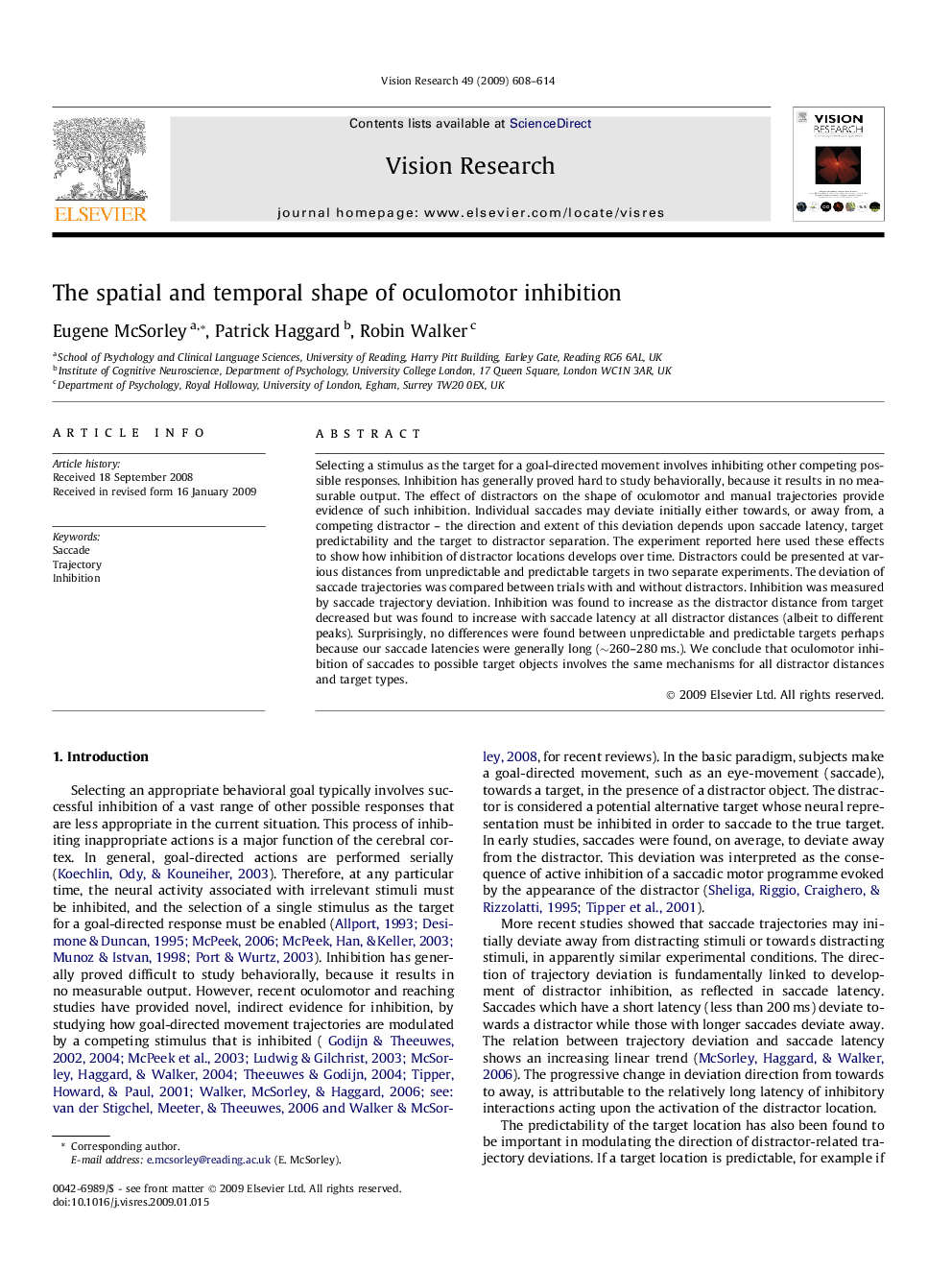| Article ID | Journal | Published Year | Pages | File Type |
|---|---|---|---|---|
| 4034769 | Vision Research | 2009 | 7 Pages |
Selecting a stimulus as the target for a goal-directed movement involves inhibiting other competing possible responses. Inhibition has generally proved hard to study behaviorally, because it results in no measurable output. The effect of distractors on the shape of oculomotor and manual trajectories provide evidence of such inhibition. Individual saccades may deviate initially either towards, or away from, a competing distractor – the direction and extent of this deviation depends upon saccade latency, target predictability and the target to distractor separation. The experiment reported here used these effects to show how inhibition of distractor locations develops over time. Distractors could be presented at various distances from unpredictable and predictable targets in two separate experiments. The deviation of saccade trajectories was compared between trials with and without distractors. Inhibition was measured by saccade trajectory deviation. Inhibition was found to increase as the distractor distance from target decreased but was found to increase with saccade latency at all distractor distances (albeit to different peaks). Surprisingly, no differences were found between unpredictable and predictable targets perhaps because our saccade latencies were generally long (∼260–280 ms.). We conclude that oculomotor inhibition of saccades to possible target objects involves the same mechanisms for all distractor distances and target types.
